The 6-Kingdoms of life -> microorganism
Microorganisms
Microorganisms, also known as microbes, are tiny living organisms that are too small to be seen with the naked eye. They exist everywhere - in the air, water, soil, and inside our bodies. Microorganisms can be classified into several groups, including bacteria, viruses, fungi, protozoa, and algae.
Types of Microorganisms
1. Bacteria: These single-celled organisms can be found in various environments and play essential roles in processes like decomposition, nitrogen fixation, and food production.
2. Viruses: Viruses are not considered living organisms as they cannot replicate on their own and require a host cell to multiply. They can cause a range of diseases in humans, animals, and plants.
3. Fungi: This group includes organisms like molds, yeasts, and mushrooms. Fungi can be beneficial, such as in the production of antibiotics, or harmful, causing diseases like athlete's foot and ringworm.
4. Protozoa: These single-celled organisms are found in diverse habitats and can be parasitic or free-living. Some protozoa, like those in the genus Plasmodium, are responsible for causing diseases such as malaria.
5. Algae: Algae are photosynthetic organisms that can be found in aquatic environments. They are important for oxygen production and form the base of the food chain in aquatic ecosystems.
Importance of Microorganisms
Microorganisms play crucial roles in various ecological processes, such as nutrient recycling, decomposition, and symbiotic relationships. They also have practical applications in fields like medicine, agriculture, and biotechnology. For example, microorganisms are used to produce antibiotics, ferment food and beverages, and clean up environmental pollution.
Study Guide
- What are microorganisms?
- Identify and describe the different types of microorganisms.
- Explain the importance of microorganisms in ecological processes.
- Discuss the practical applications of microorganisms in medicine, agriculture, and biotechnology.
- Give examples of how microorganisms impact human health and the environment.
Remember to study the characteristics, habitats, and roles of each type of microorganism, as well as their significance in various fields.
[Microorganism] Related Worksheets and Study Guides:
.◂Science Worksheets and Study Guides Fifth Grade. The 6-Kingdoms of life
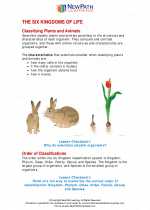
 Activity Lesson
Activity Lesson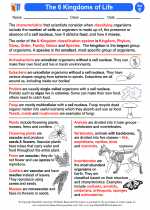
 Worksheet/Answer key
Worksheet/Answer key
 Worksheet/Answer key
Worksheet/Answer key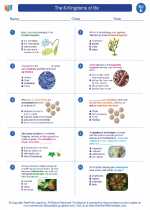
 Worksheet/Answer key
Worksheet/Answer key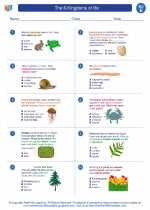
 Worksheet/Answer key
Worksheet/Answer key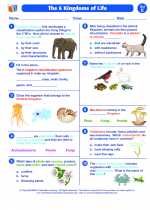
 Vocabulary/Answer key
Vocabulary/Answer key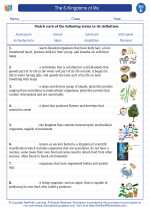
 Vocabulary/Answer key
Vocabulary/Answer key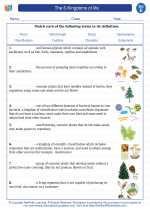
 Vocabulary/Answer key
Vocabulary/Answer key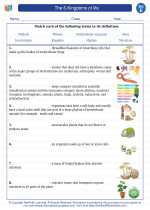
 Vocabulary/Answer key
Vocabulary/Answer key
